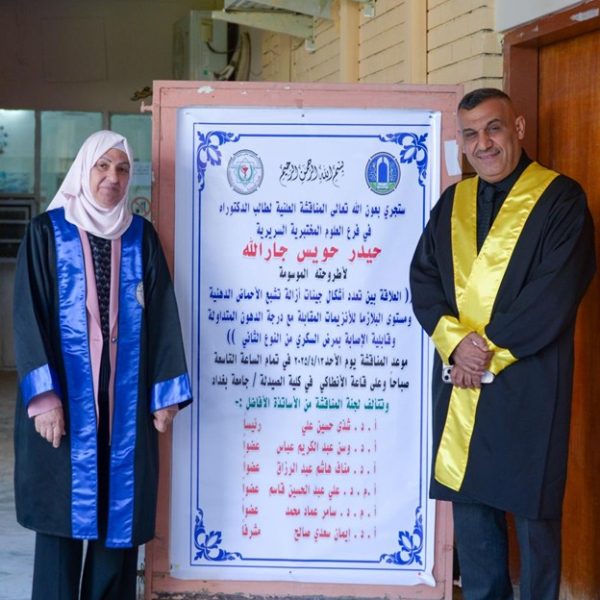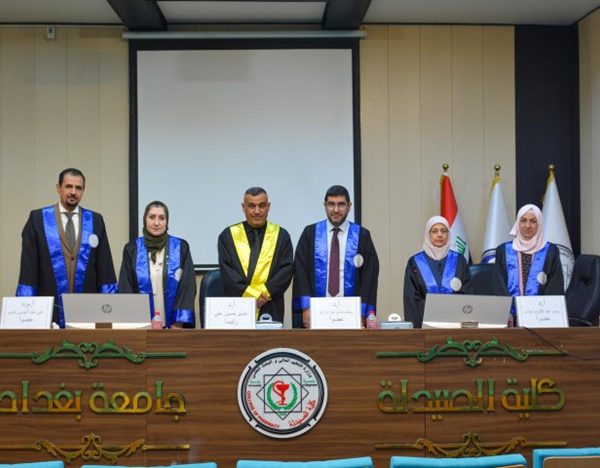The College of Pharmacy discussed the PhD dissertation entitle “ Association Between Fatty Acid Desaturases Gene Polymorphism And Corresponding Enzymes Plasma Level With Circulating Lipids Grade And Susceptibility to Type Two Diabetes Mellitus in Iraq” by the student Hayder Huwais Jarullah and his supervisor, Professor Dr. Eman Saadi Saleh, at the Clinical Laboratory Sciences Department.The study aimed to assess the distribution of genetic polymorphism of FADS1 (rs174547), FADS2 (rs174576), and FADS3 (rs174455) in type two diabetes mellitus patients compared to healthy control, and the relationship between genetic polymorphism of FADS1, FADS2, and FADS3 genes and enzymatic level of D5D and delta-6 desaturase enzymes. The study included 120 participants, divided into two groups: The newly diagnosed T2DM group, which included 60 individuals, and a control group, which included 60 apparent healthy individuals matched by age, sex, and other relevant sociodemographic variables. The participants were recruited from the Diabetes and Endocrinology Center in Nasiriyah, Dhi-Qar Health Directorate, Iraqi Ministry of Health. The study lasted from March 5, 2024, to October 25, 2024. Approximately 10 ml of venous blood was taken from each subject to assess HbA1c, glucose, insulin, high sensitivity C-reactive protein (hs-CRP), (Apo)-A, Apo B, omega-3 and omega-6 fatty acids, delta-5 and delta-6 desaturase and lipid profile. In addition to DNA extraction and sequencing for specific regain of FADS1, FADS2, and FADS3 was performed. The study concluded that all omega 3 PUFA serum levels (ALA, SDA, ETA, EPA, and DHA) and all omega 6 PUGA serum levels (LA, GLA, DGLA, and AA) were significantly lower in T2DM compared to control. In addition, in FADS1 (rs174547), the genotype and allele frequency significantly differed between control and T2DM, in which C-containing alleles and genotypes were higher in T2DM. The study recommended that gene-wide analysis of the entire region of fatty acid desaturase is necessary to account for all possible confounders; this will facilitate performing a mendelian randomized study later for optimal risk assessment of diabetes.




